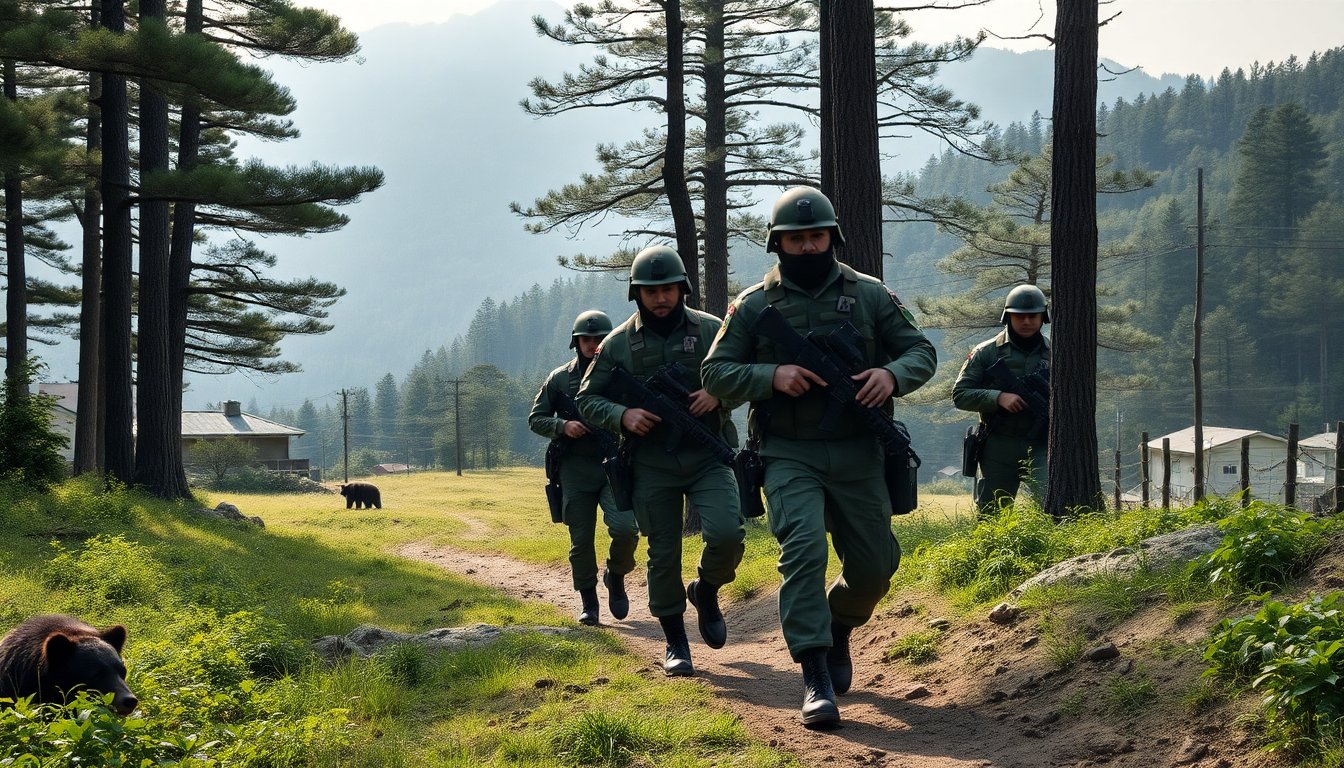Table of Contents
Across Japan, a serious crisis has emerged as residents find themselves increasingly at risk from bears. This alarming situation has prompted the government to deploy military personnel to certain areas, particularly where conflicts between humans and bears have surged. With over a dozen fatalities reported since the onset of the year, measures are being taken to ensure public safety.
According to the Ministry of Environment, there have been at least 13 reported deaths and over 100 injuries due to bear attacks since April. This figures marks the highest number of fatalities since the country began tracking bear incidents in 2006. The situation has escalated to a level where local authorities are unable to manage it independently.
The bear population in Japan
Japan is home to two primary species of bears: the brown bear and the Asiatic black bear, also known as Moon bears. The brown bear, found predominantly in Hokkaido, can weigh upwards of 450 kg (1,000 pounds). The Asiatic black bear, smaller in stature, inhabits the more populated mainland regions, with weights ranging from 80-200 kg (176-440 pounds). While encounters with the Asiatic black bear are more commonplace, the brown bear poses a greater threat due to its size and strength.
Understanding the rise in bear attacks
Experts suggest several factors contributing to the increased frequency of bear attacks this year. The northern prefectures have experienced the brunt of these incidents, with the Iwate and Akita regions reporting multiple fatalities. A recent report indicated that sightings of bears in Akita have risen by six times compared to previous years, with numerous attacks occurring in residential areas.
One notable attack involved a 78-year-old woman who was assaulted by a bear, with a second victim trying to assist her. Both victims were hospitalized but survived. Meanwhile, another woman lost her life while working on a farm after an unexpected encounter with a bear.
Government and community responses
The response from local authorities has included the deployment of the military, as expressed by Akita’s governor, who stated that the situation has exceeded the capabilities of local governments. While military personnel can support community efforts, they are restricted by law from taking lethal action against wildlife. Instead, they work alongside licensed hunters who are permitted to manage bear populations.
In an effort to bolster safety, technology has played a crucial role. Residents have begun utilizing drone surveillance and AI-based alert systems to monitor bear activity. These innovations are providing communities with timely warnings, helping to mitigate potential encounters.
Factors influencing bear behavior
A key reason for the rise in bear-human interactions is a significant food shortage in their natural habitats. Bears typically feed on acorns and beech nuts, which have seen a poor yield this year, leading them to wander into populated areas in search of sustenance. This phenomenon has been exacerbated by climate change, which experts believe is impacting food availability for wildlife.
Furthermore, the bear population has increased due to effective conservation efforts and reduced hunting activities, resulting in greater overlap between bear habitats and human settlements. Current estimates suggest there are over 54,000 bears in Japan, a significant rise from previous counts.
Looking forward: Community safety measures
In light of the ongoing threat, experts emphasize the importance of proactive measures to safeguard communities. Shota Mochizuki, an associate professor at Fukushima University, suggests that eliminating food sources around human dwellings is vital. Proper waste management and the removal of fruit-bearing trees are essential steps in deterring bears.
Physical barriers, such as electric fencing, can also significantly reduce bear incursions into populated areas. Additionally, early detection systems, including motion-sensitive cameras and alert notifications, can help communities respond swiftly to bear sightings.
Despite these interventions, Japan faces challenges due to a declining number of wildlife personnel. An aging population has led to a shortage of hunters, making it crucial to engage younger individuals in wildlife management efforts. Education is also essential; both residents and visitors must be informed about bear behavior and safety practices to minimize risks.
As Japan navigates this complex situation, the collaboration between military forces, local authorities, and technological advancements remains critical in ensuring the safety of communities threatened by the burgeoning bear population.


